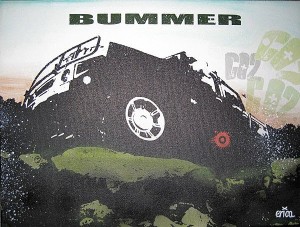 About two weeks ago, I was in San Francisco attending Craft Con, a business development conference for the indie craft community, where I had the pleasure of meeting fellow CAGW writer Kelly Rand for the first time! The weekend entailed various sessions and panel talks about a myriad of subjects ranging from the meaning of craft, to computer social networking, and everything in between. I gave a presentation on the environmental impact of crafting, bringing together of months of research and new ideas for solutions. Next week, I’ll be taking off to California once again to give this talk at Maker Faire. The lovely folks from Etsy asked me to write an article about it for The Storque, which is being published in 2 parts leading up to Earth Day. The following is Part 1, syndicated in it’s entirety.
About two weeks ago, I was in San Francisco attending Craft Con, a business development conference for the indie craft community, where I had the pleasure of meeting fellow CAGW writer Kelly Rand for the first time! The weekend entailed various sessions and panel talks about a myriad of subjects ranging from the meaning of craft, to computer social networking, and everything in between. I gave a presentation on the environmental impact of crafting, bringing together of months of research and new ideas for solutions. Next week, I’ll be taking off to California once again to give this talk at Maker Faire. The lovely folks from Etsy asked me to write an article about it for The Storque, which is being published in 2 parts leading up to Earth Day. The following is Part 1, syndicated in it’s entirety.
There is general consensus within the DIY community that what we do has a uniquely positive effect on the world. Our universal philosophy suggests that embracing methods to handmake your own belongings is fulfilling and thought provoking. Yet, quiet debate continues as to the long-term advantages of buying handmade. Is it a truly effective way to bypass corporate interests and consumerism? Ironically, the modern craft movement relies on technology only made possible by mass production. Not necessarily the crafts themselves, but at very least, the internet, thus computers, have been essential for popularizing our community, small business growth, and inspiration. Broad claims of environmental friendliness must be examined. And what is at the heart of many of our creations? Commercially manufactured supplies. After all, spindles of thread and jewelry findings don’t grow on trees… and paper is made from trees.
To gain a clearer perspective of how we obtain supplies, I ran an anonymous survey which was linked through Etsy and various indie event mailing lists. One hundred crafters from across the U.S. and Canada responded.
Of those surveyed:
- 77% sell their items.
- 68% spend $50 or more a month on supplies.
- 33% shop at thrift/consignment stores often, 42% rarely or never get supplies there.
When asked: “How would you describe your knowledge of how commercial craft supplies are produced?”
- 28% have “never really thought about it.”
- 48% are “curious, but tend to look the other way due to lack of alternatives and budget restraints.”
When asked: “Would you be willing to pay more for commercial supplies that are guaranteed to be ethically created with earth friendly materials?”
- Only 8% answered they would not pay more since they use only free and inexpensive reclaimed materials.
- 88% are willing to pay a reasonable amount more for eco-friendly supplies.
- Only 16% answered “I already do! Supplies that I use offer a wide variety of options for eco-conscious crafters.”
Let me just say that I am one of those 48% that has, until recently, swept my reservations about retail supplies under the latch hook rug. I live in the suburbs, where second-hand stores dwindle in numbers, and decent selection is limited mostly to children’s clothing. Even though upcycling is widely promoted on Etsy, it doesn’t seem to be put into practice as much as it should.
Thrifting and salvaging are a hobby for some and a headache for others. Often, crafters are faced with the day-to-day reality that upcycling is an inconsistent, and inefficient way to gather materials for microbrands that desire to have solid designs with consistent aesthetics. In many cases of upcycling, additional materials are needed to finish whatever our imagination is compelling us to create. The bottom line is that 92% of crafters surveyed admit they use commercial craft supplies to some extent, and 75% aren’t completely aware of their environmental footprint. The intentions of crafters are good and the act of crafting is positive, but if we don’t keep challenging ourselves to be more green, we run the risk of slipping into complacency. We cannot assume that handmade = environmentally friendly.

Crafters and makers have rerouted the act of assembly from factories to the individual’s home or studio. But many of us remain blissfully unaware of the origins of our raw materials. On May 13th, The US Consumer Product Safety Commission will be holding a free round table discussion on the use of lead in “paints and coatings, toys, plastics, jewelry, electronics, batteries and textiles, etc” in Bethesda, Maryland. I just have one question, “Is it in my craft supplies”? According to Consumer’s Union, “Consumer Reports notes that there is no federal standard for lead in plastics, but the amount of lead detected in the glue stick caps was more than three times the 600 parts per million allowable for paint in the U.S. Consumers who own any of those items are advised to remove them from use.”
If you are concerned about lead contamination in your crafts, there are numerous testing kits now available for home use. Of course, these will not take measure of other heavy metals and carcinogens commonly found in consumer products. (Read more about California’s lead law here).
Our rapidly growing sub-culture is spending large chunks of cash at retail stores that barely cater to our interests, contribute little to our community projects, and carelessly market unsafe products. As a writer for Crafting a Green World, I am always on the lookout for earth conscious suppliers, but few options exist in many categories. For most of us, craft stores offer little to no innovation of their merchandise, and aren’t held accountable for pollution.
And to make matters worse, many businesses have blindly jumped on the green bandwagon. We have every reason to be suspicious of new products that appear eco-friendly, especially from large corporations. Greenwashing is already a rampant practice which misleads consumers with trendy “green” imagery and wordplay. The irony of this situation is that they sell things so the community can make stuff, yet you would never dream of stocking their shelves with things that were made in the community.
It’s easy to forget that our enormous environmental problems have been inherited. Current solutions are largely a matter of personal responsibility, and constitute options that are thus far misleading, inefficient, and/or expensive. Why am I suddenly guilt stricken when I forget to bring my reusable bags to the store? Whose idea was it to make disposable bags out of toxic polymers in the first place? They are simply a product immature design. The current focus of conserving fossil fuels and misconceptions about recycling serve to prolong our complacency. Alternative energy sources and organically grown crops are a beacon for nursing the planet back to health. When we make conscious purchases, it decreases our ecological footprint, but what if we have been walking in the wrong direction all along?
We don’t have enough space in this article to go into all the facts, so here are some links to information related to the business practices and manufacturing methods of big-name retail craft outlets:
DIY Guide to Drawing Your Own Conclusions about the Craft Supply Industry:
Leading National Retailers:
clnonline.com/newsbriefs.html
investing.businessweek.com/research/stocks/snapshot/snapshot.asp?symbol=JAS
americanuniversities.suite101.com/article.cfm/billionaire_supports_doomed_school
www.hobbylobby.com/customs/General%20Information.pdf
www.thepetitionsite.com/takeaction/149976417
Helpful Wikipedia Entries:
Hobby_Lobby
Michaels
Private_equity_firm
en.wikipedia.org/wiki/Bain_Capital
en.wikipedia.org/wiki/Blackstone_Group
Materials Manufacturing:
www.panna.org/files/conventionalCotton.dv.html
www.madehow.com/Volume-7/Felt.html
www.alibaba.com/manufacturers/32899/Other_Garment_Accessories.html
www.checnet.org/healthehouse/education/articles-detail.asp?Main_ID=375
news.mongabay.com/2007/0822-wsj.html
www.motherjones.com/news/feature/2008/01/the-last-empire.html
www.checnet.org/healthehouse/education/articles-detail.asp?Main_ID=187
www.encyclopedia.com/doc/1G1-8562919.html
www.autexrj.org/No1/old1_2.pdf
extras.sltrib.com/china/
www.bellaonline.com/articles/art33912.asp
www.lenntech.com/Polyvinyl-Chloride-PVC.htm
www.cwac.net/paper_industry/
www.ota.com/organic/environment/cotton_environment.html
www.sixwise.com/newsletters/05/12/21/the_6+_synthetic_fabrics_you_most_want_to_avoid_and_why.htm
walmartwatch.com/blog/archives/textile_industry_takes_a_toll_on_the_environment_in_china/
www.ecologycenter.org/factsheets/plastichealtheffects.html
Recalls and Lead/Chemical Contamination:
www.cpsc.gov/cpscpub/prerel/prhtml05/05127.html
www.ecocenter.org/press/releases/20071205.php
www.cpsc.gov/cpscpub/prerel/prhtml08/08091.html
www.hobbylobby.com/recall/home.cfm?page=0&menu=0
www.hudsonhubtimes.com/news/article/3218231
oeconline.org/press_releases/2007/pollutioninpeople
Related EPA Studies:
www.epa.gov/ttn/atw/area/clayceramics_fs092007.pdf
www.epa.gov/epaoswer/other/mining/minedock/damage/damage.pdf
As a community coming to terms with dire consequences, what steps can we take to provide not just immediate, but long term solutions? I believe the creativity and enthusiasm within the modern craft movement can be a vehicle to demonstrate how the world can eliminate pollution and waste once and for all… Stay tuned for tomorrow’s “Make Like a Tree: Part 2.”
[Image Credit: “Bummer” by drexel ]
[Image Credit: “Beauty in Industry” by Jude McConkey]


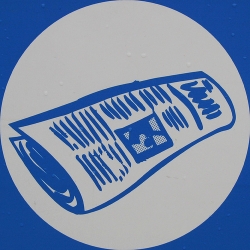
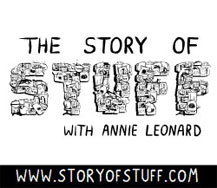
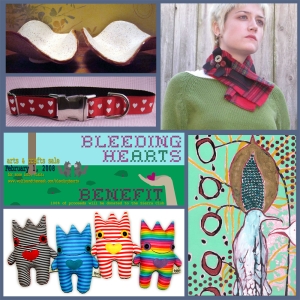
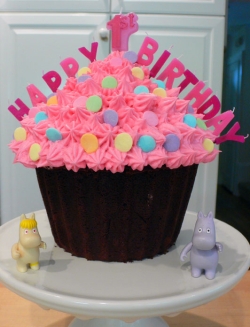
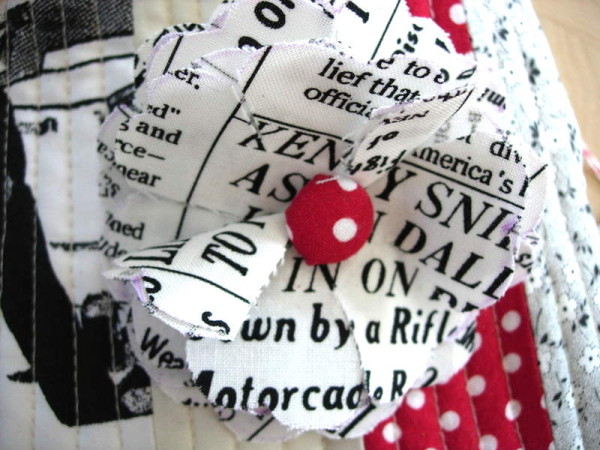
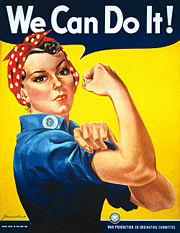
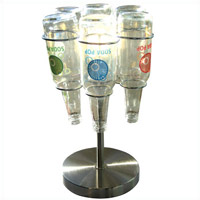

I will seek you out at Maker Faire.
I will seek you out at Maker Faire.
I will seek you out at Maker Faire.
Hey Deb! Awesome! Leslie and EJ will be there too. I think we are all bunking with Rachel. Did you know we are setting up a Craft Con table? 🙂
Hey Deb! Awesome! Leslie and EJ will be there too. I think we are all bunking with Rachel. Did you know we are setting up a Craft Con table? 🙂
Hey Deb! Awesome! Leslie and EJ will be there too. I think we are all bunking with Rachel. Did you know we are setting up a Craft Con table? 🙂
Hey Deb! Awesome! Leslie and EJ will be there too. I think we are all bunking with Rachel. Did you know we are setting up a Craft Con table? 🙂
I am really looking forward to seeing the rest of the work, and maybe chatting with you more about what you’ve found out. As a quilter this topic has been close to mind lately.
I am really looking forward to seeing the rest of the work, and maybe chatting with you more about what you’ve found out. As a quilter this topic has been close to mind lately.
I am really looking forward to seeing the rest of the work, and maybe chatting with you more about what you’ve found out. As a quilter this topic has been close to mind lately.
I am really looking forward to seeing the rest of the work, and maybe chatting with you more about what you’ve found out. As a quilter this topic has been close to mind lately.
Excellent post! I am really keen to make my crafts as environmentally friendly as possible, and I use reclaimed beads and buttons in my jewellery designs, but I haven’t yet been able to find any recycled or eco-friendly jewellery making materials (findings, tiger tail, cotton thonging etc). If anyone can point me in the right direction I would be sooo grateful (I am in the UK).
Excellent post! I am really keen to make my crafts as environmentally friendly as possible, and I use reclaimed beads and buttons in my jewellery designs, but I haven’t yet been able to find any recycled or eco-friendly jewellery making materials (findings, tiger tail, cotton thonging etc). If anyone can point me in the right direction I would be sooo grateful (I am in the UK).
Excellent post! I am really keen to make my crafts as environmentally friendly as possible, and I use reclaimed beads and buttons in my jewellery designs, but I haven’t yet been able to find any recycled or eco-friendly jewellery making materials (findings, tiger tail, cotton thonging etc). If anyone can point me in the right direction I would be sooo grateful (I am in the UK).
Excellent post! I am really keen to make my crafts as environmentally friendly as possible, and I use reclaimed beads and buttons in my jewellery designs, but I haven’t yet been able to find any recycled or eco-friendly jewellery making materials (findings, tiger tail, cotton thonging etc). If anyone can point me in the right direction I would be sooo grateful (I am in the UK).
The way I see it, crafters are some of the most eco-conscious folks around with the least amount of options for going green. We’re going to change all that though, you’ll see! 🙂
The way I see it, crafters are some of the most eco-conscious folks around with the least amount of options for going green. We’re going to change all that though, you’ll see! 🙂
The way I see it, crafters are some of the most eco-conscious folks around with the least amount of options for going green. We’re going to change all that though, you’ll see! 🙂
The way I see it, crafters are some of the most eco-conscious folks around with the least amount of options for going green. We’re going to change all that though, you’ll see! 🙂
Pingback: Crafter by Night » Green Craft
Pingback: Maker Faire does Green Living : Crafting a Green World
Pingback: Meet your MAKER FAIRE: Lo-Fi Solutions for a Planetary Crisis : Crafting a Green World
Pingback: Rock Beats Scissors? FiberStone Tree-Free Paper Begs to Differ. : Crafting a Green World
Pingback: Printer-Friendly Grocery Shopping: Brown Paper Seed Packet Business Cards Tutorial – Crafting a Green World